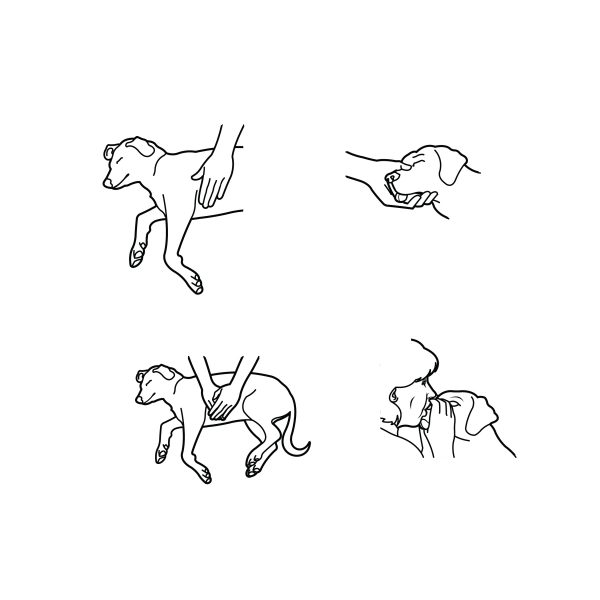How to Give Your Dog CPR
 Giving a dog CPR? It might sound silly or downright impossible because of the shape of dogs’ mouths. But it is definitely possible and is a great skill that every dog owner should have in case of an emergency. Here’s how to give your dog CPR:
Giving a dog CPR? It might sound silly or downright impossible because of the shape of dogs’ mouths. But it is definitely possible and is a great skill that every dog owner should have in case of an emergency. Here’s how to give your dog CPR:
Why Learn Dog CPR?
When a dog loses consciousness, there is a chance they will go into respiratory arrest—ceasing to breathe—which is often followed by cardiac arrest and death. By performing CPR, you can stop this chain of events.
What is CPR?
CPR stands for cardiopulmonary resuscitation and is comprised of artificial respiration and chest compressions. Time is of the essence if your dog has stopped breathing or if their heart has stopped beating. It is best to start performing CPR immediately in either of these cases.
Also, it is much easier and more effective if you have two people working as a team: one doing the chest compressions and the other doing artificial respiration. So, think about learning how to give your dog CPR with a spouse, one of your children, or another family member.
How to Give Your Dog CPR:
1. Lay Your Dog Flat on Their Side
Put your dog down on their side on a flat surface.
2. Check for Breath
Find out whether your dog has really stopped breathing. You can figure this out by checking the gums—they may have turned blue from lack of oxygen. You can also check to see the dog’s chest rising and falling, and feel for breath with your hand.
3. Make Sure Your Dog’s Airway is Clear
You can do this by extending the dog’s head and neck and opening their mouth wide. If there is an object lodged in the throat, grasp the tongue and pull it forward.
If this technique doesn’t work to get the object out, you can use your fingers, pliers or tongs to try to get it. You can also try the Heimlich maneuver for dogs.
4. Start Artificial Respiration
If the airway is clear and your dog still isn’t breathing, it’s time to start artificial respiration. With your pup on their side, lift their chin. Then, hold their mouth shut, forming a seal around their nose and mouth.
Blow gently into the dog’s mouth, just enough to make the chest rise a little. Blow more softly for smaller animals and harder for larger ones.
Wait for the air to leave the dog’s lungs and then repeat.
5. Pair With Cardiac Resuscitation
Keep the animal on its side.
For small dogs that are under 30 pounds, place one hand on the ribcage over the heart and the other hand on top of the first.
For puppies, place your thumb on one side of the chest and the rest of your fingers on the other side.
Then, compress the chest about one inch, squeezing and releasing at about 80 to 100 compressions per minute.
For larger dogs, position your hands on the widest part of the ribcage. Compress the chest about one-quarter of its width, doing about 80 compressions per minute, until the dog has a steady heartbeat.
Combining the cardiac and pulmonary forms of resuscitation, you will do about one breath for every five chest compressions.
6. Continue the Process and Monitor Your Dog
Continue this process, giving a breath about every three seconds between chest compressions, and keep going until the animal breathes on its own or the heartbeat stops. After you stop, continue monitoring the heartbeat.
Being in a position where you have to give your dog CPR is scary for everyone involved, but knowing what to do in an emergency can help you and your dog get through it.
